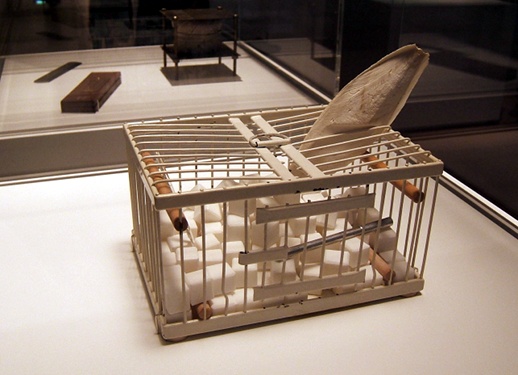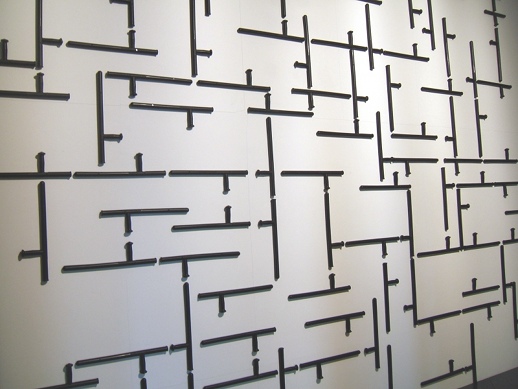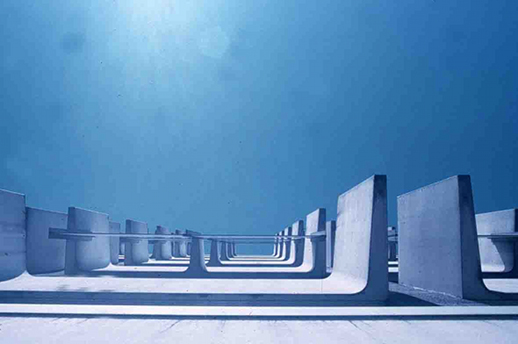Art through an Award Window
For the last few years the Japanese art world has tried to pump some blood into the notoriously anemic local market for contemporary art. Through the concerted effort of galleries, dealers and critics, a number of events have been created (e.g. “101 Tokyo”, “+Plus”, Shinwa Contemporary Art Auction, etc.) with the not so secret goal of nurturing a new generation of collectors. Indeed, the constant mantra of such events, seminars and talks has been that buying contemporary art is a clever and economically sound choice.
Given this premise, it was just natural for the Mori Art Museum to celebrate the tenth anniversary of the internationally-renowned and much respected Marcel Duchamp Prize which every year showcases works by up-and-coming France-based artists chosen by the influential ADIAF group of private collectors. This exhibition introduces works by twenty-seven artists who have won or been finalist for the prize plus famous pieces by the man himself, Marcel Duchamp, who inspired the project and still acts as an inspiration and guiding light for the new generations of artists.
The exhibition spans the whole gamut of art expression, from painting and sculpture to installation, photography and video. The subjects explored range from everyday life to politics, urban landscapes, and time. As guest curator Akiko Miki pointed out, it is extremely difficult to identify a specific tendency or trends among the presented artworks. The end result, as it often happens in such cases, is a lack of cohesion coupled with the uneven quality of the works.
The first section is devoted to Duchamp and his masterpieces including his (in)famous ready-mades.

They have lost none of their original freshness and relevance, and — I’m sorry to say — they immediately raise the bar to a level that only a few of the other artists featured in this exhibition can reach.
The most disappointing works are those which — like Camille Henrot’s plastic bags, Wang Du’s fake Yellow Pages and mangled metal, and Bruno Peinado’s painted aluminum “sculptures” — feel dull and derivative.
What Miki defines as “undermining the concept of newness and originality” could also be dismissed as an easy exploitation of old ideas. This stuff used to be called avant-garde fifty years ago.
A more lasting impression leave those artists who approach reality with a wicked sense of humor that only barely hides a much harsher reality. Kader Attia, for instance, covers a wall with what from a distance looks like an exercise in Arabic calligraphy, but at a closer inspection turns out to be made of truncheons — like those that the French police use against the Muslim immigrants rioting in the suburbs.

Richard Fauguet — who among other things is a master of “making chic out of cheap” (see the original and stylish sculptures he creates by gluing together tacky objects from the Sixties) reminds us that even the fun and simple act of riding a bicycle can be overly difficult when your bike keeps getting stolen and the outside world becomes a jungle more and more people prefer to avoid.
Other artists (namely Nicolas Moulin, Laurent Grasso, and Cyprien Gaillard) introduce the unexpected into everyday life in order to catch the viewer off guard. Moulin’s “Novamond” photos, for example, depict alien landscapes that are completely devoid of human presence. Through a very simple photographic idea (whose “secret” the viewers will have to discover by themselves) he creates sci-fi worlds which are too perfect to be real.

Grasso and Gaillard, on the other hand, respectively introduce strange clouds and modern architecture into their seventeenth century and medieval landscapes, creating a time warp that feels intriguing and slightly menacing. One of the highest points of the exhibition — and my personal favorites — are Carole Benzaken’s light boxes whose multiple viewpoints overlap in a hybrid image space that lies between the abstract and the figurative, and manages somehow to crystallize time and movement.
In the end, though, one drifts back to Duchamp’s works, still hardly unsurpassed after all these years.
Randy Swank
Randy Swank


